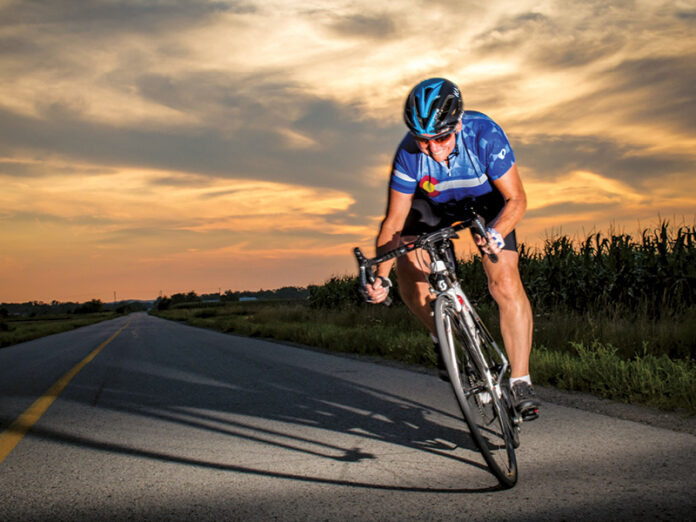
If a short bike ride is great, a long ride is way better. Whether you are on pavement or pedalling trails over roots and rocks, there are a few things you can do to boost your performance and make your two-wheel adventure a little more gnarly. Here are nine training and racing tips to get your big wheel rolling.
1Get Tuned In
Before you crank a pedal stroke, tune your bike for riding season. Make sure shifting is smooth and brakes are responsive. Find out what your gearing ratio is because some bikes aren’t geared for climbing. Consider installing a new cassette and chain to improve climbing performance.
2Adventure Analysis
What’s the terrain you are riding? Is it mainly flat, rolling hills or 1,500 metres of climbing? This will help with your training priorities. Try an app such as Strava to see how many metres you are climbing in training to prepare for the adventure. Tracking your riding data can be a great motivator to improve your fitness.
3Need For Speed
On your short training days, boost your challenge. Do a 10-20 minute warm-up ride, then work on your speed by riding with a stronger rider for as long as you can. If you are riding solo, find a hilly course and give 8/10 effort per climb. Embrace climbing in your training as it will prepare your body to prevent cramping from muscle exertion.
4Engine Prep
Build your volume each week to avoid exhausting yourself as you gain fitness. If your goal is a 100K race, but your longest ride is 50K, add 10K to your endurance ride each week.
5Train Heavy
Ride with two big water bottles and a heavier bike or wheels. On the event day, with lighter equipment and finding the perfect gear, you will feel so much lighter and will be faster on the climbs.
6Wolf Pack
Get smart and comfortable with group riding. Hanging with a pack is more fun, efficient and will provide you with a speed advantage. Drafting can save up to 20 per cent of your energy! Knowing where the wind is coming from and being comfortable with following a wheel will greatly add to this experience. For mountain biking, drafting helps as well in open sections in the forest. Drafting also reduces brain fatigue by following a trusty rider through technical trails and it is more fun!
7Pre-ride Prep
Avoid eating anything new on an event day. Stick to what works as you will have a nervous belly. Try steel-cut oats, fruit, toast, fruit/veggie smoothie with a max of 10g protein. Avoid the classic big breakfast as it takes 2-4 hours for protein to digest. Save it for after your epic ride and avoid cramps and unnecessary digesting.
8Fuel Your Ride
If you are cycling 90 minutes or more, you need to fuel while you ride. If you wait until you are hungry, it’s too late, the energy bonk is just around the corner. For every hour of cycling, fuel with 20-30g of carbohydrate, such as 4-6 dried apricots, a banana, gel, or two Fig Newton cookies. Get in the habit of eating on your bike for your endurance rides and make sure you drink water to help digest the fuel. Eat and drink before you are hungry or thirsty — that’s the golden rule.
9Dress For Success
Helmet, cycling gloves, shorts and jersey add to comfort and performance. Cycling shoes with clip-in pedals are fundamental to your best cycling performance. Watch the forecast and pack a rain jacket in the middle pocket of your jersey. Arm warmers that can be removed easily are handy. Knee warmers help protect the joints from chilly winds, especially on descents. A vest will keep your core heat in. Rain really changes your ride. If you are prepared, you will enjoy it much more and save energy.
Click to view the 8 Weeks To A Faster Long Distance Cycling Challenge training plan.
















